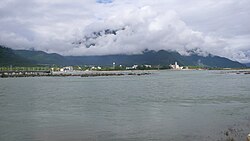This article may require cleanup to meet Wikipedia's quality standards. The specific problem is: Improper conversions.(October 2017) |

The Tibetan Plateau is a plateau in southern Central Asia. It is the highest plateau in the world, with an average elevation of 4,500 meters and covering an area of roughly 2.5 million square kilometres.


